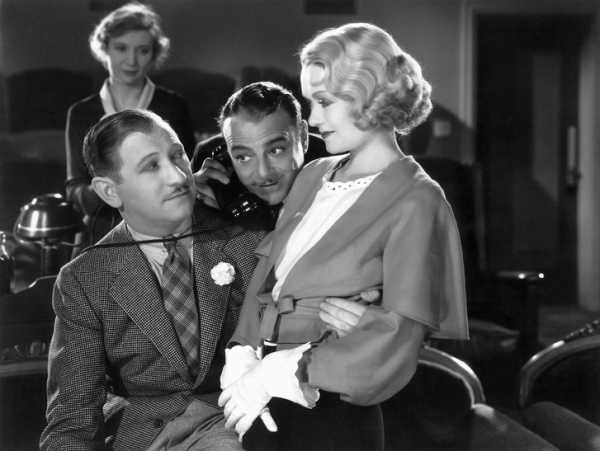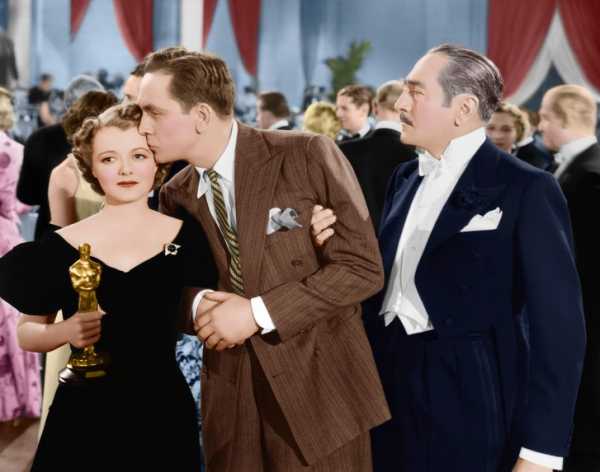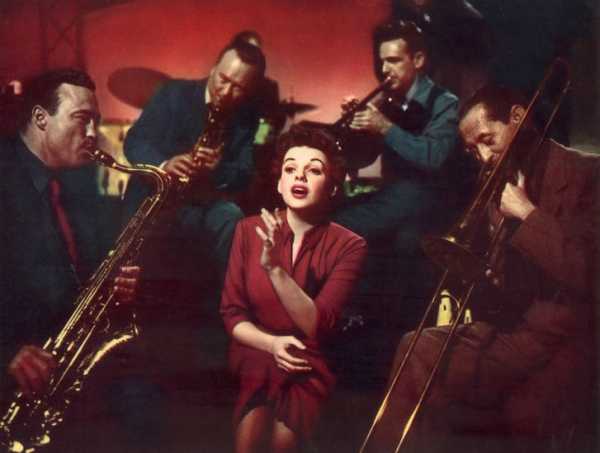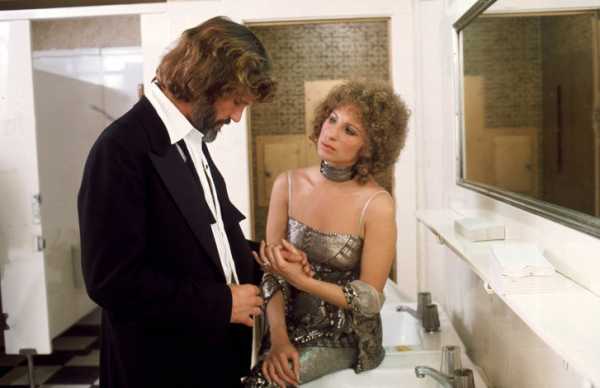
The very first scene of “What Price Hollywood?”—the movie from 1932 that informs all four versions of “A Star Is Born” (1937, 1954, 1976, and 2018)—shows what’s missing from this year’s edition. Directed by George Cukor, who also made the 1954 film, it begins with a young woman (played by Constance Bennett) alone in a tiny apartment, gazing at the pages of a movie fan magazine and donning clothing and makeup that resemble what the female stars are wearing, finding a picture of Greta Garbo in romantic rapture with Clark Gable and, holding it next to her face, pretending to be Garbo. She does all of this in mirrors, so that she can see herself in imagined self-transformation. It’s a scene of virtual and unrecorded selfies; it’s media-infused—even the romantic music accompanying the scene isn’t a score but the record that she has put on. And, when this young woman ends up in movies, it’s the movies that reflect, preserve, and amplify her self-transformations.
Lady Gaga, who has the title role in this year’s “A Star Is Born,” is an exemplary artist of self-transformation. (I wrote about her artistry here, in 2011.) But, in Bradley Cooper’s new film, she plays a young woman who becomes a star but whose persona undergoes virtually no change (except to the extent that a slick and uncaring producer seeks to change it). The very subject of the movie is the virtue of unvarnished authenticity, of remaining unaltered throughout the mind-bending experience of fame. Cooper presses Lady Gaga into the Procrustean frame of his own artistic concerns and, in the process, leaves out what makes her such a noteworthy and original artist. Basically, he borrows her powerful vocal skills and leaves her personality out.

Gregory Ratoff, Lowell Sherman, and Constance Bennett in “What Price Hollywood?,” from 1932.
Photograph from Everett
In “What Price Hollywood?,” in contrast with the “Star” movies, the young aspiring actress, Mary Evans, doesn’t get romantically involved with the older man (a celebrated but alcoholic and failing director, played by Lowell Sherman) who discovers her talent. (She finds romance elsewhere; she’s no innocent.) What’s more, in the movie’s behind-the-scenes sequences of Mary’s new life on a soundstage, Cukor displays extraordinary insight into the very nature of movie artistry. He highlights the distinctive manner and method that Mary, a gifted and outgoing mimic, has to master in order to be in movies at all. It’s a very cinematic way of acting; it soon enables her to rise quickly from bit parts to stardom, and it also soon becomes a very Hollywood way of living.
Stream “What Price Hollywood?” on FilmStruck.

Janet Gaynor as Esther Blodgett in the 1937 “A Star Is Born.”
Photograph from Everett
The 1937 version of “A Star Is Born,” directed by William Wellman (and featuring a script co-written by Dorothy Parker), stars Janet Gaynor as Esther Blodgett, the movie-mad daughter of a North Dakota farm family. She reads fan magazines and dreams of going to Hollywood to become a star. Her parents are openly hostile to her ambitions; only her grandmother, Lettie (May Robson), is sympathetic. She likens Esther’s dream to her own—when she set out, half a century earlier, for the West. She also tells Esther that dreams are paid for in “heartbreak” and tells the story of her young husband being killed by Indians, and how she persisted, nonetheless, and continued to North Dakota on her own. The twist is more than a foreshadowing of Esther’s later grief, when the famous but alcoholic and declining actor, Norman Maine (Fredric March), who discovers her and helps to make her a star, meets with a bad end. It’s also a symbolic mainstream-Americanization of the predominantly Jewish and predominantly immigrant potentates of Hollywood, an assertion that Hollywood and its productions are as much a part of American identity as the Westward Expansion and the crops of heartland farms.
Wellman is a hearty, rowdy director who delights in the oddball details of inside-Hollywood business and its characters. The movie is filled with behind-the-scenes curiosities of moviemaking, and it even begins and ends with the meta-touches of closeups on the first and last pages, respectively, of its own screenplay (as if declaring to an audience all too ready to believe its story, or its myth, that “it’s just a movie”), but its melodrama is restrained. It doesn’t get very close to Esther’s own art, her sense of it, and the emotional core that energizes it.
Stream “A Star Is Born” (1937) on YouTube, Amazon, FilmStruck, and other services.

The 1954 version of “A Star Is Born,” starring Judy Garland, is a high point of Hollywood filmmaking and the best iteration of the film by far.
Photograph from Everett
There’s no such problem with Cukor’s “A Star Is Born,” from 1954. It is the best version by far, and it’s a high point of Hollywood filmmaking over all. There, Esther is played by Judy Garland, and the character begins at a plateau of artistic accomplishment and life experience that starts the movie at a passionate high and then rises even higher. Esther’s a singer with a popular band, and while her life on the road has been turbulent, her career is modestly successful already—she’s earning a living as a singer and has the respect of her colleagues, but she dreams of making a name for herself as a singer with a No. 1 record on the charts. She’s a skilled performer who’s accustomed to crowds, who knows how to handle herself (and a drunk movie star, Norman Maine) in the spotlight, but whose vision of herself is limited to what she’s already doing. Norman (James Mason) sees Esther differently. He sees that she is not just a singer but a comprehensively original personality who would be more than a hit: she could be a movie star.
The movie is filled with Garland’s production numbers, both on movie sets and in domestic song-and-dance scenes, and they make clear what Esther didn’t do with the band and what she does do in movies: wear costumes, play roles, and, in the process, tap into and give enduring form to depths of emotion that, previously, she had merely tossed off to an audience of her colleagues in private jam sessions. Though many of the dramatic scenes of the 1954 film match (sometimes word for word) ones in the 1937 movie, their tone is drastically different. Cukor’s direction is energetic and eruptive, full of urgent closeups and tense long takes that are uniquely attuned to his lead actors’ ferocity. Mason is as suave as he is tormented; Garland gives one of the most freely expressive, explosive performances anywhere in classic Hollywood; both actors burst onto the screen in moments of agonizing observational intimacy. (The movie was severely cut soon after its initial release; the streaming versions include reconstructions of scenes that were cut.)
Stream “A Star Is Born” (1954) on Amazon, FilmStruck, and other services.

Kris Kristofferson and Barbra Streisand in the 1976 version of “A Star Is Born.”
Photograph from Everett
The 1976 version of “A Star Is Born,” starring Barbra Streisand as the struggling singer Esther Hoffman, and Kris Kristofferson as the alcoholic rock star John Norman Howard, suggests transformations that it doesn’t dramatize; it’s a sadly missed opportunity. Streisand is a powerful actress as well as a transfixing singer, but the director, the virtually undetectable Frank Pierson, puts her through a series of costume changes without ever breaking through Streisand’s mantle of overt power to reveal a dramatic inner life. Instead, the scenes of performance play like clips; the acted ones play like formalities. Reportedly, Streisand had originally wanted John Cassavetes to direct the film; Cassavetes—who subsequently made “Opening Night,” one of the greatest of all movies about the transformative power of performance, would doubtless have tapped passions to stand alongside those of Cukor’s film.
Stream “A Star Is Born” (1976) on Amazon, FilmStruck, and other services.
The 2018 version was originally slated to star Beyoncé and be directed by Clint Eastwood. While it’s impossible to know how that script would have been different from Cooper’s, what’s clear is this: throughout Eastwood’s career, he has dramatized the warping effect of fame, the uses and abuses of public personae, the distorting power of myths. It’s easy, and tempting, to imagine that an Eastwood “A Star Is Born” would have offered an insightful and empathic view of all that’s born along with stardom and borne by stars, finding inspiration in the same media-mad modernity of “What Price Hollywood?”—as befits a director who, wondrously, was born before that movie was made.
Sourse: newyorker.com






